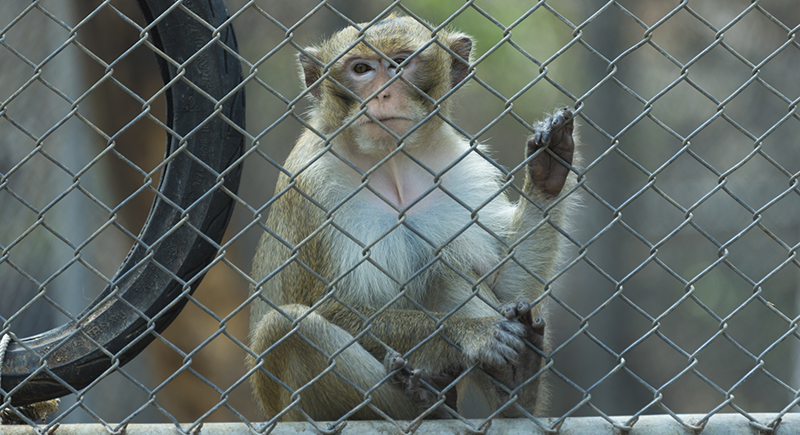The Horrifying Aftermath When a Truck Full of Lab Monkeys Crashed
On the morning of October 28, 2025, a truck transporting rhesus macaques overturned on Interstate 59 in Jasper County, Mississippi. The accident caused a public scare, a rapid law enforcement response, and conflicting statements between local officials and Tulane University. Several monkeys escaped into the surrounding area; some lost their lives, and others were confined in their crates.
Reports of disease, aggression, and mishandling quickly spread. The situation exposed how little the public knows about lab animal transport and raised concerns about emergency response, scientific transparency, and the treatment of research animals under stress.
The Initial Crash Triggered Immediate Confusion
The truck flipped near mile marker 117 on I-59, north of Heidelberg, Mississippi. Authorities received emergency calls that animals were loose, and the driver stated to deputies that the monkeys were dangerous. He claimed they carried diseases like COVID-19, herpes, and hepatitis C and that handlers needed protective gear to interact with them. These warnings led to the urgent response.
@cbsnews Monkeys being transported on a Mississippi highway escaped after the truck carrying them overturned on Tuesday. All but three that got out have since been killed, authorities said. The Jasper County Sheriff’s Department said the rhesus monkeys were from Tulane University, and initially wrote in a post on Facebook that “they are aggressive to humans and they require PPE to handle.” It wasn’t clear who the monkeys belong to or where they were going. #mississippi #monkeys ♬ original sound – cbsnews
Local law enforcement treated the animals as a biological hazard and took action quickly. At the time, no verification existed for any of those claims. That did not stop officials from proceeding as though they were accurate. Authorities believed that five monkeys died during the incident or were euthanized at the scene. Thirteen remained secured in their transport crates. Meanwhile, three monkeys ran into the nearby wooded area and stayed missing well into the evening.
Not long after, wildlife officers joined local police to help with recovery and containment efforts. And officials warned people to avoid any monkey in sight.
Conflicting Statements Created a Misinformation Spiral
Tulane University released a statement shortly after reports of the accident spread. The university clarified that the rhesus macaques had been housed at Tulane’s National Primate Research Center but did not belong to the university. It said the monkeys were not infected with any diseases and had not been exposed to pathogens during their time in Louisiana. This statement directly contradicted the earlier assertions made by the driver and shared by law enforcement.
That contradiction resulted in mixed reactions. Some feared a potential outbreak, while others questioned why animals were killed without confirmation of risk. The sheriff’s office said it relied entirely on the driver’s assertions at the time of the crash. By then, several animals had already been euthanized as a safety measure. Tulane also announced it would send a team of animal care specialists to assist authorities in the area. But the gap between the university’s version and the initial account raised larger concerns about accuracy and responsibility.
Ownership of the Monkeys Remained Unclear

Image via iStockphoto/greenleaf123
No agency confirmed which organization owned the monkeys. Tulane repeatedly emphasized that it was not the owner or transporter. The monkeys had been held at Tulane’s research facility but were in transit to another research entity, which was never named publicly. The destination was a research facility in Florida, but no further details were given. In addition to that, no records were shared about the total number of animals in the shipment before the wreck, the identity of the third-party carrier, or the purpose of the transport.
If the animals were not infected, as Tulane stated, then it was unclear why law enforcement believed they were. If the animals were infected, the lack of protocol or protective response raised another issue.
Later on, the authorities contacted an animal disposal service to collect the dead monkeys. Those still in crates were held for recovery by the unnamed owner. But no follow-up clarified what happened after that point.